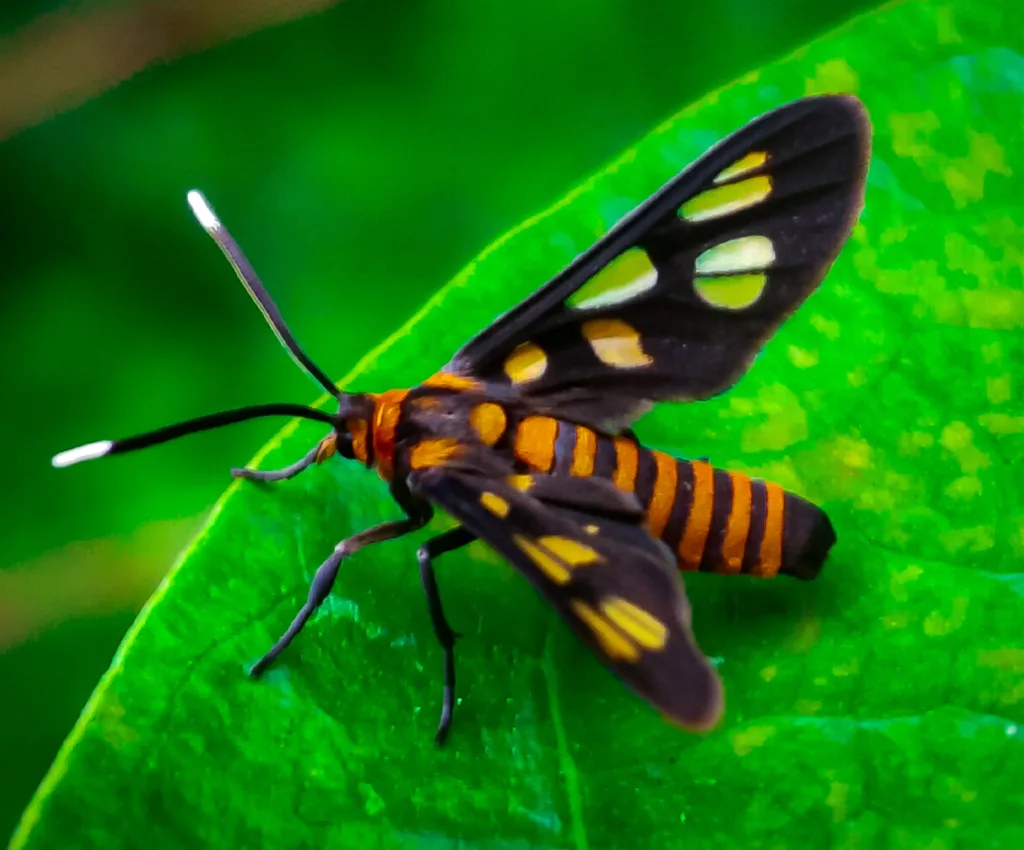The tiger, a majestic and powerful creature, and the tiger bee fly, a humble and delicate insect, may not seem to have much in common at first glance. Yet, both carry a profound spiritual significance that intertwines them in a fascinating web of symbolism and meaning.
The tiger, with its striking stripes and formidable presence, is often seen as a symbol of strength, courage, and power. It is revered in many cultures as a spiritual guide and protector, embodying qualities of fearlessness and resilience. It is a conduit of raw, primal energy, reminding us of our inherent strength and our capacity to overcome adversities.

On the other hand, the tiger bee fly, despite its fearsome name and appearance, is a gentle creature that feeds on nectar from blossoms of various flowering plants, particularly asters and coneflowers. It is often found near wooden structures where carpenter bees nest, and poses no threat to humans as it neither stings nor bites. However, its spiritual significance is as profound as that of the tiger.
The fly, in general, is a symbol of transformation and change, much like the butterfly and moth. Thus, seeing a tiger bee fly indicates a period of metamorphosis, which could be physical, emotional, mental, or spiritual. It is a message that change is imminent or already taking place, and it is a time for growth and evolution.
The tiger bee fly, in particular, represents the paradox of power and gentleness, mirroring the tiger’s might and the bee’s industriousness. It is a symbol of balance, reminding us of the need to harmonize our physical strength with our emotional resilience, and our fierce determination with our gentle compassion.
Thus, the tiger and the tiger bee fly, two seemingly disparate creatures, share a profound spiritual connection. They both symbolize strength and transformation in their own unique ways, offering valuable lessons about resilience, courage, change, and balance.
Understanding the Attraction of Tiger Bee Flies
Tiger bee flies are particularly attracted to flowering plants, especially coneflowers and asters, from which they sip nectar using their formidable beak.
Exploring the Deeper Significance of the Fly: Uncovering its Spiritual Meaning
In spiritual context, the fly serves as a reminder of the transient nature of life. It symbolizes change, transformation, and adaptability. This tiny creature teaches us to adapt to the changing conditions of our lives and to embrace the inevitability of change. It encourages us to let go of old habits and beliefs that are no longer serving us, to grow and evolve. The fly also represents persistence and determination, as it often continues to try to achieve its goal, regardless of how many times it may be swatted away or ignored.
Is a Tiger Bee Fly Capable of Biting?
A tiger bee fly does not bite or sting humans. They are typically found near wooden structures where carpenter bees make their nests, but they pose no direct threat to people.
Understanding the Definition of Bee Flies
Bee flies refer to any member of the family Bombyliidae, which are dipterous flies that resemble bees. They are characterized by their hairy bodies and are known to consume nectar. While these bee flies are harmless to humans and are beneficial for pollination, their larvae are parasitic and often feed on the larvae of bees and similar insects.
Conclusion
The tiger bee fly, an intriguing member of the Bombyliidae family, serves as a fascinating example of nature’s paradoxes. Despite its fearsome appearance, this creature uses its imposing beak not for aggression, but to delicately sip nectar from a variety of flowering plants, with a particular preference for coneflowers and asters. Often found near wooden structures, where its natural prey, the carpenter bee, tends to nest, the tiger bee fly poses no threat to humans, as it neither bites nor stings.
Symbolically, the presence of the fly signifies a period of transformation, paralleling the metamorphoses of butterflies and moths. Whether this change is physical, emotional, mental, or spiritual, it represents a significant shift and growth period.
Interestingly, the tiger bee fly’s larvae are parasitic on bees and related insects, highlighting the complex and often unexpected dynamics within the insect world. Combining an intimidating exterior with a non-aggressive nature, the tiger bee fly embodies the dichotomy of appearance versus reality. It’s a captivating insect that continues to intrigue entomologists and nature enthusiasts alike.
